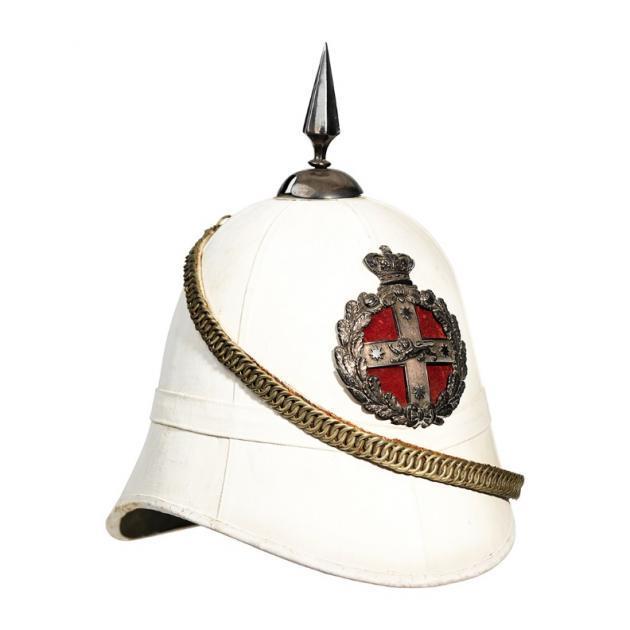
This NSW Military Forces foreign service or 'sun' helmet is a rare example of the headdress worn by Australian infantryman for the period c. 1880-1901. Made in Oxford Street, Sydney from cork and bleached, pipe-clayed cotton, this helmet demonstrates the adaption of British military tradition into that of colonial New South Wales.
Helmets like this one were worn by the men of the NSW Soudan Contingent when they embarked from Circular Quay for the Egyptian Campaign in 1885. Collingridge's renowned painting The Departure of the Contingent provides a vivid historical record (www.awm.gov.au/collection/ART16593/ ).
The plate, or badge, on the front of the helmet comprises Queen Victoria’s crown atop St George’s Cross embossed with a star of the Southern Cross on each arm and the British lion in the centre, all enclosed by a wreath of NSW waratah. It was adopted in the early 1880s and remained in service until the Queen's death in 1901.
The top of the helmet has a fluted spike on a circular base. The spike and the badge are made of nickel alloy 'white metal'. The white metal has a superb, even patina.
A line of chin scales are looped across the front of the helmet. They are made of gilt metal stitched to a leather strap.
The NSW Military Forces were created in 1878 after the British garrison had withdrawn from the colony. This was one of the first style of headdress adopted. There is a rich body of documentary and photographic evidence of helmets like this being worn by the NSW Military Forces through the period spanning the Russian scare of the 1880s and the negotiations for a united colonial defence force in the build up to Federation in 1901 in which the NSW Military Forces played a major role.